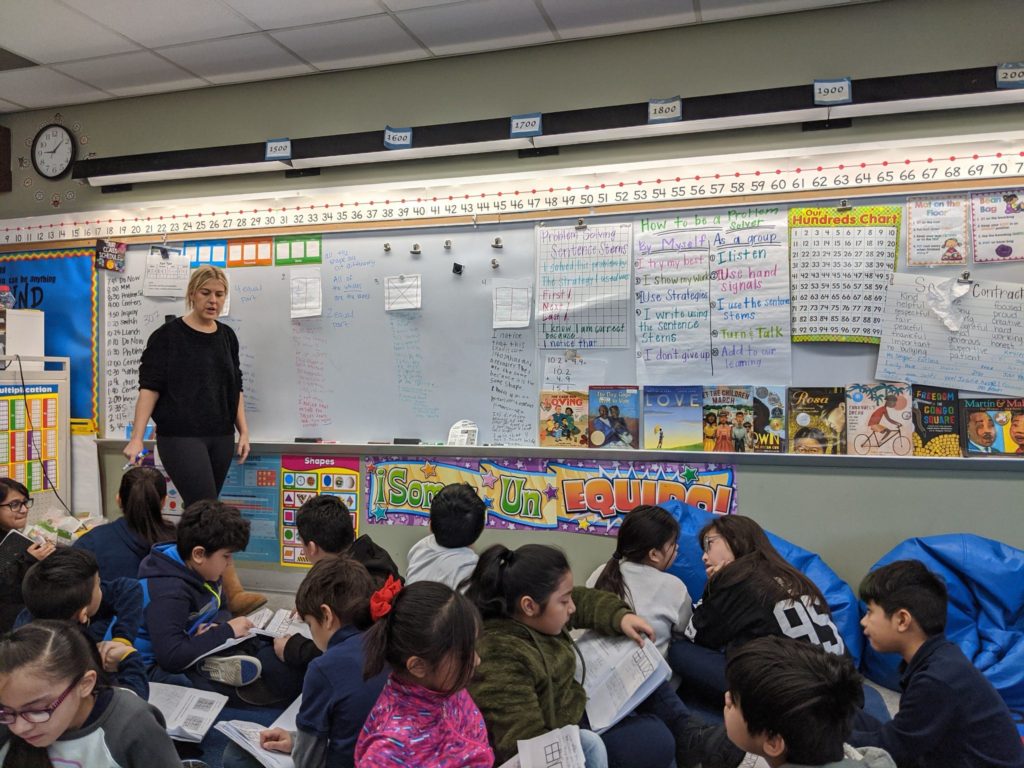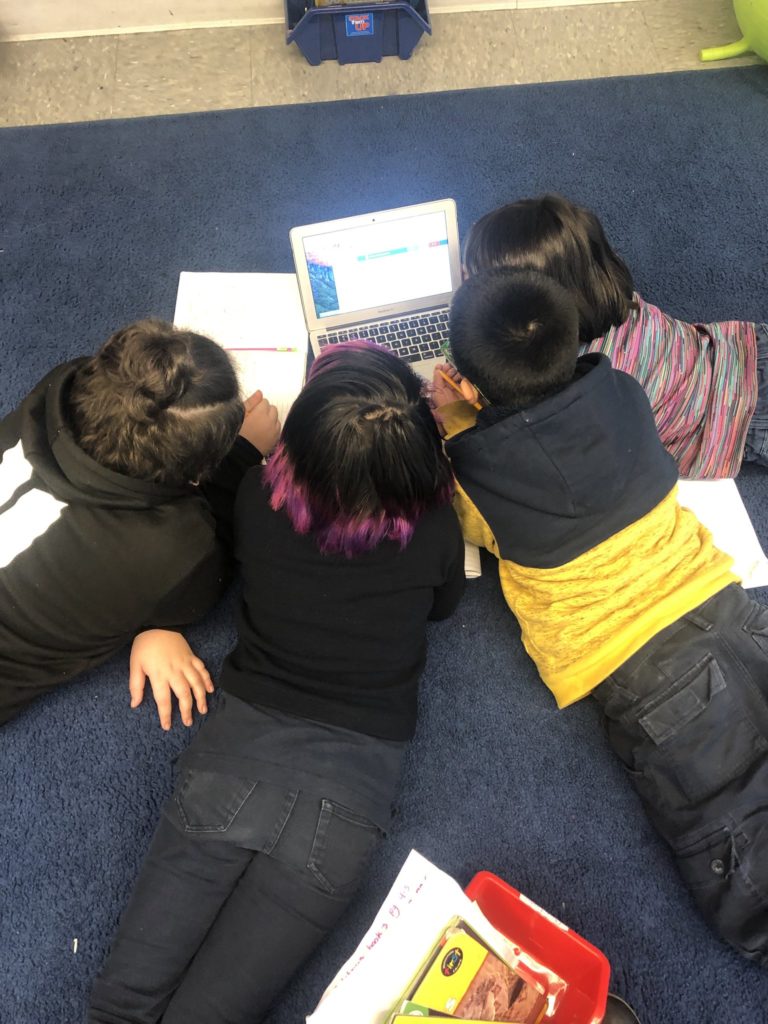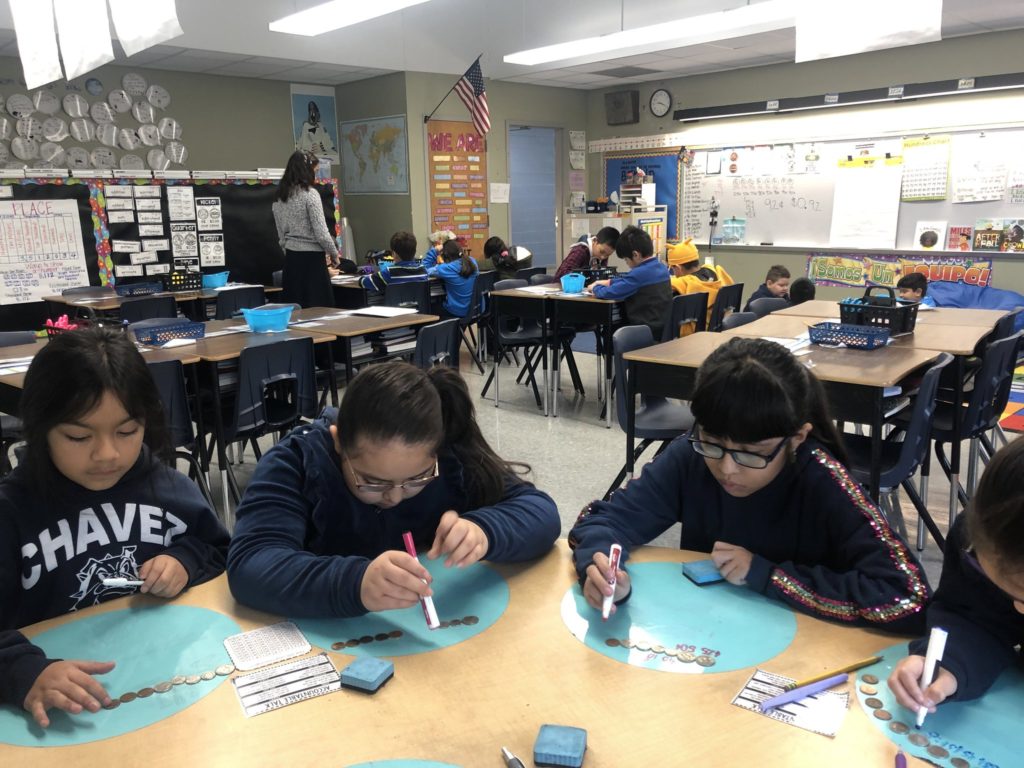Recently, Chicago Public Schools released a report from the CPS Inspector General’s office questioning how the NWEA test is given to students. While the report mainly focuses on lengthy testing times and frequent pauses during tests, it also includes a table that lists schools, grades and subjects where students achieved huge growth.
This table includes Chavez Elementary’s third-graders, for growth in math. I believe that it was highly unethical to include my students in the report without any other information except a growth percentile, and therefore I think it’s only fair for me, their math teacher, to offer some context. This is not a defense of the test, this is a defense of my students.
At Chavez, this level of growth is not a surprise, although the report characterized our third-graders’ gains as “surprising.”

Let’s Not Ignore the Racism Behind The Questions
It is important that the racist undertones of questioning the validity of our results not be ignored. Is this data surprising because our students are Black and Brown? Is this data surprising because they come from a community of immigrants? Is this data surprising because nearly all of our students qualify for free lunch? Or is it just surprising that CPS students in general could achieve at this level? If a third-grade class from Glencoe, Illinois showed similar outstanding growth in math, would that be cause for suspicion? Or pride and celebration?
In the report, a consultant who advised the authors noted, “Any classroom you flag at this level, something is different…we don’t know what it is, but it is different.” Yes, something is different at Chavez. Allow me to spell out those differences for you.
First and foremost, Chavez is a hub of excellent teaching. Our early-grades teachers lay the groundwork for students to achieve at high levels and have a strong impact on students’ overall growth. They work constantly to develop strong readers, writers and mathematicians. At Chavez, nearly half of our students (45%) are considered to have “limited English,” and they are concentrated in the early grades. This means our early-grade teachers have the dual job of helping students develop these academic capacities while also growing their English-language skills.

In my own classroom, instead of telling or showing students how to tackle problems in the abstract, we work together to create new learning by problem solving. This teaching style encourages mistakes and gives students the mathematical confidence they need to try math they haven’t seen before. This teaching also promotes equity in the classroom. Problem-solving based learning values collective knowledge-making and ensures that all students can share their ideas and reasoning. Many research studies show a direct correlation between teaching through problem-solving and high growth in mathematical knowledge and skill.

Additionally, I run a math workshop every day. Students practice new material by working in small groups and playing mathematical games, which develops their independence and the ability to drive their own learning. Most importantly, I have the daily opportunity to work with each one of my students closely, in groups of four to six. I can focus on each student’s specific mathematical needs. Students can move at their own pace, whether they need additional support or are ready for enrichment.
At Chavez, our faculty has committed to delivering an hour more of instructional time than other CPS schools. Teachers have the autonomy to use this time as needed for their students. In my own classroom, students have the opportunity to work on a mix of project-based math, technology, and more intensive small-group instruction. During this time, I focus heavily on students who need intervention and support. I deeply believe this additional hour helps to close the opportunity gaps created by larger social and educational systems.
Many teachers at Chavez, myself included, also run tutoring clubs after school. Although they look different in every classroom, the focus is always on creating safe and exciting spaces to learn.
I can only hope that this type of culture and work continues to be celebrated, rather than questioned, in CPS. I have an open-door policy and would invite anyone to come observe my teaching and meet my students in person. They are, in fact, one in a billion.
Lindsay Singer
Latest posts by Lindsay Singer (see all)
- All These Third-Graders Are Saying Is, “Give Dreamers a Chance!” - April 28, 2021
- My Chavez Students Are One in a Billion - March 3, 2020
